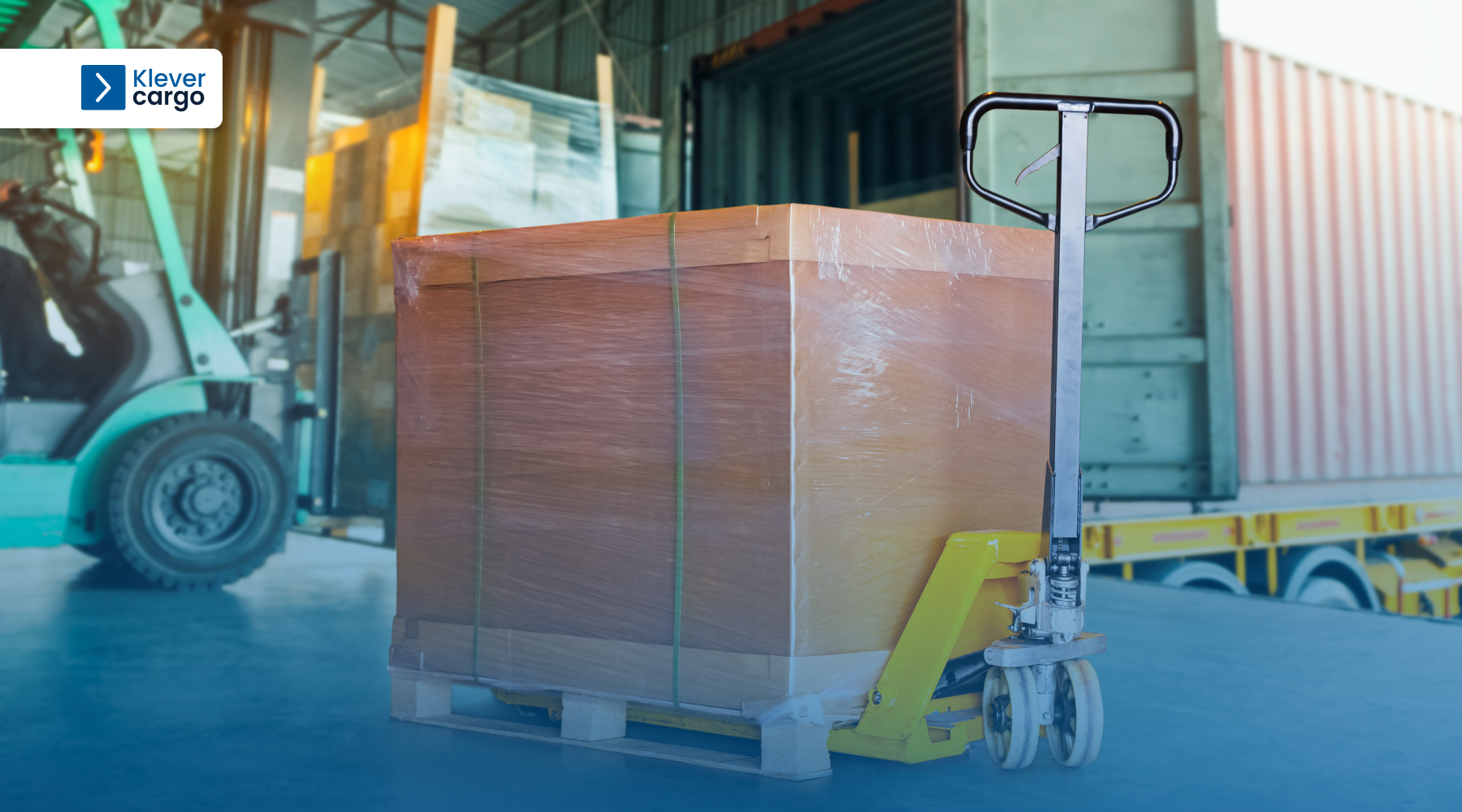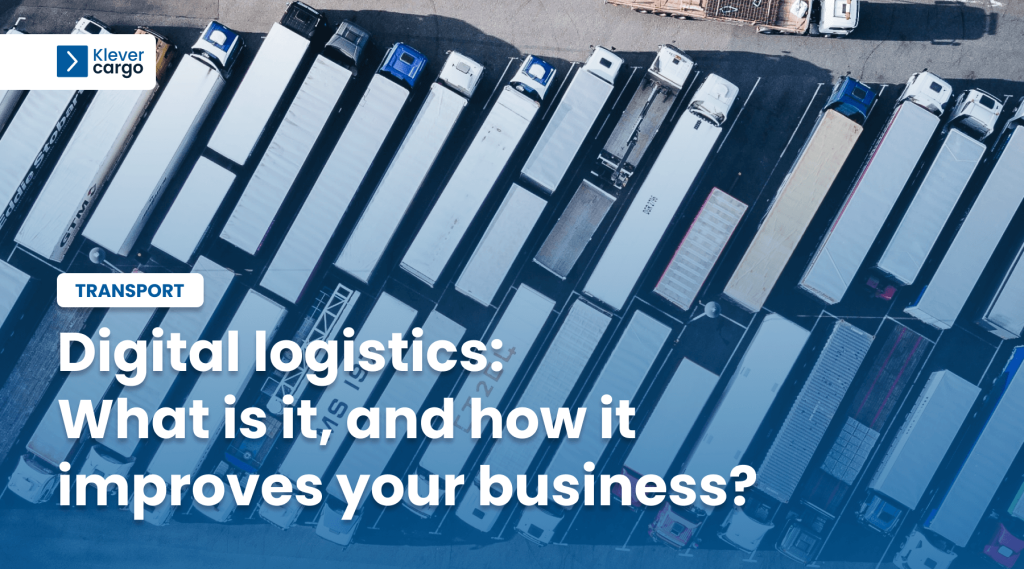Efficient freight handling is a crucial component of successful supply chain operations. It not only reduces costs but also guarantees timely deliveries. Cross-docking is a proven and highly effective strategy that can help achieve this goal.
Cross-docking makes moving goods faster. Instead of warehousing, they go directly from one truck to another. This cuts down on storage time and handling. As a result, orders get processed faster, and deliveries are quicker. It makes supply chains more flexible and able to meet customer needs.
In the following words, we’ll explore the importance of cross-docking for the supply chain and explain how you can apply it for optimal results.
What is cross-docking?

Cross-docking is a logistics strategy used in the distribution of goods, where products are directly transferred from an incoming truck to an outgoing truck, without stopping at a warehouse for storage. This approach enables immediate delivery of products to customers.
Cross-docking is particularly beneficial for items requiring swift delivery or in high demand. This method reduces storage time, resulting in faster delivery and lower inventory costs. Additionally, it improves the overall efficiency of the supply chain.
However, effective cross-docking operations require meticulous planning, as it involves coordination between participants and the use of reliable transportation networks to ensure prompt delivery to customers.
Cross-docking example
A great example of cross-docking is in the automotive industry. When car makers order vehicle parts, they receive them from various suppliers.
Instead of storing these parts in a warehouse, the manufacturer uses cross-docking. Upon arrival, the pieces get sorted based on vehicle models. Then, they’re directly loaded onto outbound trucks or containers.
With cross-docking, the manufacturer reduces costs for storing the parts. They’ll also free up space in their warehouse, which can be crucial for storing larger parts. Overall, it makes their supply chain much more efficient.
The basics of cross-docking

1. Main types of cross-docking
The main types of cross-docking are pre-distribution and post-distribution cross-docking.
-
Pre-distribution cross-docking
Pre-distribution is when products arrive at a cross-docking facility for processing and sorting. They quickly sort them there based on where they need to go, like specific stores or customer orders. Then, they load the goods onto trucks and send them directly to their final destinations.
-
Post-distribution cross-docking
Post-distribution is when you keep products in the distribution centre after their distribution. This happens for specific customers or locations. The products are not immediately shipped to the end customers. Instead, they’re kept on hold until they receive final customer orders.
2. Types of goods suitable for cross-docking
The ideal goods for cross-docking include:
- products with a short shelf life (like fresh produce or dairy products);
- time-sensitive products (like urgent medical supplies);
- high-demand products;
- pre-packaged items;
- combined shipments;
- pre-sorted goods.
3. Cross-docking process
The cross-docking process can be divided into these stages:
- receiving;
- sorting;
- loading;
- immediate dispatch.
Goods will first arrive at the cross-docking facility from different suppliers. When they do, the goods are sorted based on their delivery addresses. This organisation allows for an efficient loading process onto vehicles.
Sometimes not all components are available for shipping. In that case, they’ll hold them temporarily. But, the goal is to cut storage time as much as possible.
After sorting, the products are directly loaded onto trucks or containers. Finally, the vehicles leave the facility and ensure quick delivery to the customers.
4. Why is cross-docking used?
Cross-docking speeds up the delivery of goods by moving them directly from inbound transportation to outbound vehicles without storage. It reduces inventory costs and makes the supply chain more efficient.
Logistics users can save costs and reduce damages by combining shipments. Those perks allow for smoother logistics and satisfied customers.
5. How long does cross-docking take?
Cross-docking will range from a few minutes to several hours. The duration will depend on the following:
- the number of goods;
- the complexity of the shipment;
- the facility’s efficiency.
Simple shipments can be completed within minutes. Multiple, complex shipments can take a few hours. The main goal is to minimise the time products spend in the facility.
Examples of successful cross-docking implementation

-
Retail industry
The retail industry can significantly benefit from cross-docking. It’s common for retail stores to have storage issues and have to keep items in a warehouse. But, when they need to restock, the products go straight into a cross-docking centre. That avoids holding them in a warehouse.
There, the products are sorted and loaded onto trucks according to the specific stores they need to go to. The trucks then take the products straight to those stores for immediate restocking. This way, the store gets its products faster. It also avoids storing large amounts of inventory.
-
Food and perishable sector
When suppliers harvest fresh products, getting them into stores is crucial. Perishables must maintain their freshness. These products have a short shelf life, which is another reason why speed is key.
Instead of storing them in a warehouse, they use cross-docking. They transport the products into the cross-docking facility. There, they sort them for their specific customers. Again, they load the products and proceed with the delivery.
With cross-docking, stores minimise the chances that the products will spoil. Of course, customers will be satisfied since they’re getting the freshest products.
Cross-docking vs traditional warehousing

We concluded that cross-docking is a process where products aren’t stored in warehouses. Instead, they’re quickly sorted and loaded onto vehicles for delivery.
With traditional warehousing, you store products in a warehouse before shipping them. That allows for managing your inventory and holding products until you need them.
Hence, the main difference between cross-docking and traditional warehousing is storage time. Cross-docking avoids warehousing to reduce storage costs with faster order fulfilment. Traditional warehousing offers better inventory control but requires more time storage expenses.
To decide between the two, you should consider the following factors:
- Firstly, consider the nature of the products. Cross-docking is ideal if you’re dealing with perishable goods or high-demand items. Products with longer shelf life or lower demand benefit more from traditional warehousing.
- Customer demand is another good indicator. Stick to cross-docking if you deal with items that require quick delivery. If the order patterns are stable, traditional warehousing is the better choice.
Cross-docking reduces inventory holding costs. It’s an excellent option for companies that want to minimise those expenses. However, others need more control over their inventory. In that case, traditional warehousing is the way to go.
Cross-docking can optimise transportation by reducing costs and carbon footprint. Traditional warehousing piques when full truckloads are necessary for cost-effectiveness.
Advantages of cross-docking

1. Minimising storage requirements
Cross-docking minimises storage requirements by avoiding warehousing altogether. Products move directly from inbound to outbound vehicles. Hence, there is no need for prolonged storage. This efficiency reduces costs and saves space. As a result, businesses can respond faster to customer orders.
2. Faster order fulfilment and delivery times
With cross-docking, products move quickly from receiving to outbound vehicles. That prevents any storage delays. This process ensures that orders reach customers quickly. Of course, that leads to satisfied customers.
3. Reduced handling time and labour costs
Another advantage of cross-docking is reduced handling time and labour costs. Products move quickly between inbound and outbound vehicles. That cuts down on handling duration. This process requires less work compared to traditional warehousing with long storage periods. As a result, businesses save on labour expenses and boost operational efficiency.
Challenges of cross-docking

1. Requires adequate carriers
The challenge of requiring adequate carriers is common in the logistics industry. It mainly happens during peak seasons. Traditional methods of finding carriers can be time-consuming. It’s also challenging to ensure their reliability.
With KleverCargo‘s platform, this challenge becomes manageable. Businesses needing carriers can easily list their transportation requirements, including specific cargo details and delivery timelines. The platform’s network of registered carriers can then view these listings. They follow that up by bidding on the transportation job.
The centralised nature of KleverCargo simplifies the process for companies seeking carriers. They gain access to many verified transporters with their capacity and track record.
By bidding, companies can secure the best rates and select carriers with the right expertise and equipment. This approach ensures that companies can find adequate carriers even during high-demand periods.
How to find a reliable carrier?
1. To create a new offer, click the Create new button, followed by Transport request.

2. From there, you’ll be able to create your transport request. You can input all the relevant route information, like:
- pickup date and time;
- pickup point;
- cargo’s weight and dimensions;
- packaging method, and other relevant info.

3. Once you input all the data, click the Create transport request button, and you’re all set.
4. You can navigate to the My transport requests tab from there. There, you’ll be able to see all the requests you posted on the KleverCargo platform.

5. You can inspect each bid and find the one that suits you best.
The platform is suited for shippers, carriers, and warehousing purposes. Through KleverCargo’s network, the company can quickly find a suitable carrier. That eliminates the hassle of endless searches and phone calls. The terms of the deal are straightforward and the communication with the chosen carrier is also smooth within the platform.
This efficient network benefits both shippers and carriers. It simplifies the process and ensures smooth operations.
2. Communication among supply chain participants
Communication among supply chain participants is a challenge in cross-docking due to the need for real-time coordination.
To ensure efficient cross-docking, all parties must share timely and accurate information with each other. Any miscommunication can disrupt the flow of goods, resulting in complications and missed deliveries.
An excellent solution to this issue is using a centralised platform like KleverCargo. It’s an all-in-one freight exchange platform for road transport and logistics.
Picture a situation where a company needs to transport perishable goods urgently. Unfortunately, they encounter obstacles in locating dependable carriers and communicating effectively. This results in delays and uncertainty, especially if they lack a centralised platform to rely on. Consequently, it becomes challenging to connect with reliable carriers.
With KleverCargo, businesses can easily upload their cargo information onto the platform. From there, they can input their desired delivery timeline and requirements and finish posting a cargo offer. Registered carriers can then bid on the transportation, offering competitive rates and confirming their ability to handle perishable goods effectively and efficiently. Carriers have the freedom to choose the rate that best suits their needs, and once they’ve decided, the deal is final. All of this can be done with just a few clicks. It’s a fantastic solution, isn’t it?
3. Compliance and regulatory factors
Complying with regulations and transportation rules can be a daunting task for cross-docking, especially when dealing with sensitive or dangerous goods. Ensuring carriers have the necessary permits is crucial for maintaining safety and following regulations.
Managing both efficiency and compliance can be challenging. It’s important to stay vigilant and keep track of local and international regulations to overcome these obstacles.
Cross-docking saves time and money

Cross-docking gained so much popularity in the industry for a reason. It’s an excellent way to save time, costs and satisfy customers. But to implement cross-decking successfully, companies need strategic planning and advanced technology.
Hence, using platforms like KleverCargo can significantly ease the cross-decking process. Embrace cross-decking to unlock streamlined logistics and gain a competitive edge.


